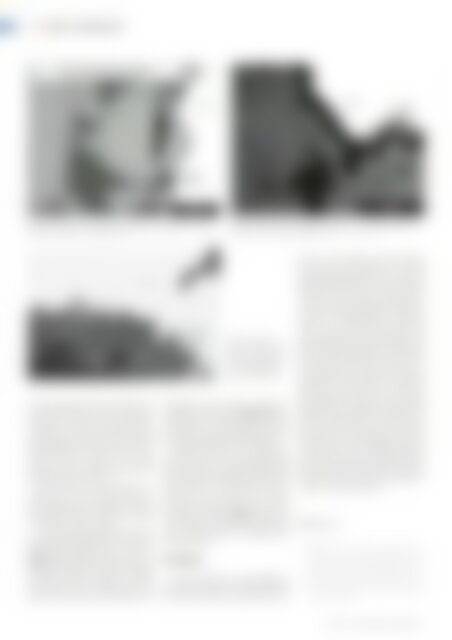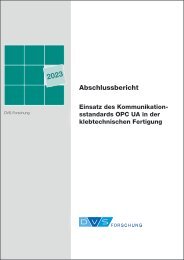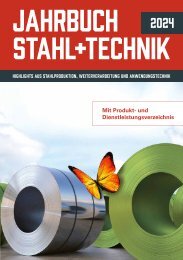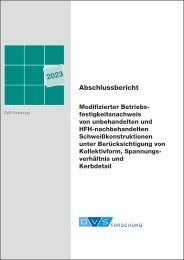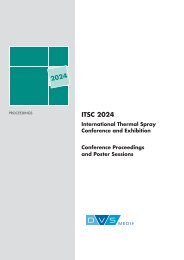STEEL + TECHNOLOGY 01/2020 EXTRACT
STEEL + TECHNOLOGY 01/2020 EXTRACT
STEEL + TECHNOLOGY 01/2020 EXTRACT
Create successful ePaper yourself
Turn your PDF publications into a flip-book with our unique Google optimized e-Paper software.
42 | <strong>STEEL</strong> <strong>TECHNOLOGY</strong><br />
Figure 10. Microstructure of crucible test 1 - conventional ladle<br />
well filler and Steel 1 (SEM 150x) (Picture: Purmetall)<br />
Figure 11. Microstructure of crucible test 2 - conventional ladle<br />
well filler and Steel 2 (SEM 22x) (Picture: Purmetall)<br />
and a manganese steel 2 (crucible test 2).<br />
The ladle well filler is shown in light grey<br />
whereas the corundum crucible is shown<br />
in dark grey. It is obvious that the ladle well<br />
filler infiltrated the structure of the crucible<br />
and destroyed it. According to this a more<br />
intense contact reaction took place<br />
between the conventional ladle well filler<br />
and the corundum crucible.<br />
Steel 2 shows in this crucible test (crucible<br />
test 2) a more intense reaction process<br />
compared to crucible test 1 showing<br />
a less intense reaction, visible by the grade<br />
of infiltration into the crucible.<br />
Conventional ladle well filler and steel 2<br />
do also show redox reactions, as shown by<br />
EDX-analyses (reading points 1 and 2 in<br />
table 3). Reading point 1 shows a MnO-rich<br />
phase which consists of MnO and oxides of<br />
the ladle well filler forming a manganese-chromite<br />
spinel. Reading point 2 of<br />
table 3 furthermore shows that steel 2 lost<br />
manganese and aluminium whereas a<br />
chrome-pickup took place. Figure 12 shows<br />
a SEM-picture of the structure of the contact<br />
zone of a new developed ladle well filler<br />
with manganese steel 2 (crucible test 3).<br />
During crucible test 3 no redox reactions<br />
between the new developed ladle<br />
well filler and the manganese steel (steel<br />
2) took place. EDX analyses therefore give<br />
neither evidence on loss of Mn, Al or Si of<br />
the steel nor a Cr-pickup into the steel.<br />
These observations explain the visual<br />
impression, shown in figure 9, that only a<br />
small reaction potential occurs between<br />
the new ladle well filler, manganese steel<br />
and the crucible.<br />
Conclusion<br />
Figure 12. Microstructure<br />
of crucible<br />
test 3 - new type of<br />
ladle well filler and<br />
Steel 2 (SEM 230x)<br />
(Picture: Purmetall)<br />
Due to field tests it was possible to<br />
demystify the behaviour of ladle well fillers<br />
during real conditions. Ladle well filler do<br />
not act as inert fillings which are heated<br />
through by the temperature of the liquid<br />
steel and therefore sinter as a function of<br />
ladle well filler thickness. In fact, the ladle<br />
well filler can be solved by thermochemical<br />
and erosive processes like tapping the<br />
furnace or rinsing treatments. These processes<br />
are time-depending, explaining<br />
why free opening rates decrease with<br />
increasing retention time of the steel in the<br />
ladle. The alloy composition of the overlaying<br />
steel strongly affects the thermochemical<br />
processes in the ladle well filler. The<br />
conventional ladle well filler completely<br />
dissolved in the presence of steel with<br />
16% manganese content. For the ongoing<br />
development of high-performance steel<br />
grades, a new generation of ladle well fillers<br />
is necessary. Basis for the successful<br />
development of next generation ladle well<br />
fillers is the exact knowledge of the reaction<br />
behaviour of the involved oxides and<br />
elements. Identifying all available reaction<br />
partners and their impact on the reactivity<br />
of ladle well fillers during steelmaking is<br />
subject of ongoing research.<br />
References<br />
[1] Bombeck, M. A.; Janssen, M.; Dannert, C.;<br />
Deinet, T.; Alonso Ona, I.: Grundlegende Untersuchungen<br />
zur Funktionsweise von Schiebersanden.<br />
stahl und eisen 136 (2<strong>01</strong>6) 8, 35-41<br />
[2] Bombeck, M. A.; Janssen, M.; Deinet, T.; El Gammal,<br />
A.: Verhalten von Schiebersanden bei Kontakt<br />
mit flüssigem Stahl“, stahl und eisen 139<br />
(2<strong>01</strong>9) Nr. 4, 46-50<br />
<strong>STEEL</strong> + <strong>TECHNOLOGY</strong> 2 (<strong>2020</strong>) No. 1


